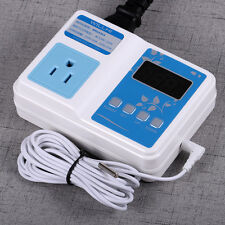I am looking to expand my carbon fiber experience with prepreg and or post curing of composite components and sub assemblies. Specifically I am looking to try rolling tubes, creating plate, and creating fincan assemblies.
However as some of you know this requires an oven that can be reasonably controlled with temperatures including ramp ups, hold temps and ramp down. A commercial oven is not affordable therefore I am looking to build my own. I know others have done this and have used a variety of materials and methods. To control the temps and set a schedule I have been looking at PID temp controllers, which are readily available at a reasonable price range.
My initial thoughts were to build an inexpensive wooden box and insulate it. However I would like to look into making something out of metal, possibly stainless. I was envisioning a fan that continually moves the air from the top to the bottom in a vertically standing chimney design, which also works well based on my work and storage space. Ideally I am hoping for a design that has a reasonable amount of flexibility and life.
Safety has to be the number one requirement for any design to be considered. Beyond safety the box should physically accommodate assemblies up to 6’ in length and 24” in diameter. I am not sure of the temperature ranges that I might want in the future but I currently have some low-medium prepreg that has a target temp of at most 310F for 1 hour, with a ramp up and down cycle. The ramp up rate should be no more than 5°F per minute until the target temperature is attained. Then I need to maintain the target temperature throughout the cure cycle and ramp down at a rate of less than 5° F per minute to at least 150°F (66°C) before removing from the oven.
I am looking for some practical guidance on a design, materials, etc., as well as realistic expectations on a DIY project like this.
However as some of you know this requires an oven that can be reasonably controlled with temperatures including ramp ups, hold temps and ramp down. A commercial oven is not affordable therefore I am looking to build my own. I know others have done this and have used a variety of materials and methods. To control the temps and set a schedule I have been looking at PID temp controllers, which are readily available at a reasonable price range.
My initial thoughts were to build an inexpensive wooden box and insulate it. However I would like to look into making something out of metal, possibly stainless. I was envisioning a fan that continually moves the air from the top to the bottom in a vertically standing chimney design, which also works well based on my work and storage space. Ideally I am hoping for a design that has a reasonable amount of flexibility and life.
Safety has to be the number one requirement for any design to be considered. Beyond safety the box should physically accommodate assemblies up to 6’ in length and 24” in diameter. I am not sure of the temperature ranges that I might want in the future but I currently have some low-medium prepreg that has a target temp of at most 310F for 1 hour, with a ramp up and down cycle. The ramp up rate should be no more than 5°F per minute until the target temperature is attained. Then I need to maintain the target temperature throughout the cure cycle and ramp down at a rate of less than 5° F per minute to at least 150°F (66°C) before removing from the oven.
I am looking for some practical guidance on a design, materials, etc., as well as realistic expectations on a DIY project like this.






